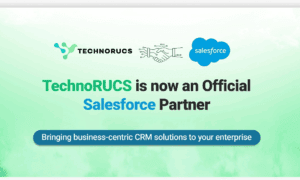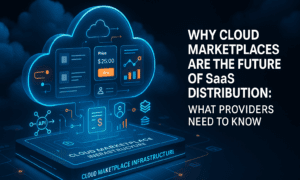A new era of public sector regulation is emerging through advanced technology.
Nethaji Kapavarapu, an expert in cloud integration and digital transformation, examines how innovations like AI, cloud computing, and data-driven solutions enhance compliance frameworks and public service efficiency, revolutionizing regulatory mechanisms for greater transparency, automation, and effectiveness.
The Power of Cloud Technology in Regulatory Frameworks
The integration of cloud technology has revolutionized regulatory operations, replacing outdated paper-based processes with automated, scalable platforms. Modern regulatory agencies utilize cloud-based solutions to enhance accessibility, optimize resource allocation, and improve data accuracy. These platforms efficiently process thousands of compliance requests daily, significantly outperforming traditional models. Additionally, cloud computing ensures seamless data management with robust security and compliance measures. Auto-scaling mechanisms dynamically adjust resources in real time, maintaining peak performance, while cloud governance frameworks streamline operations, reducing processing times and enhancing system reliability.
Integration Ecosystems: A Game-Changer for Compliance Monitoring
The advancement of application programming interface (API) architectures has enhanced system interconnectivity, enabling regulatory bodies to seamlessly integrate digital services. Well-managed API ecosystems allow organizations to process thousands of regulatory transactions per second, minimizing manual errors and boosting efficiency. Structured API governance is crucial for compliance, ensuring data integrity through robust security protocols and standardized exchanges. These frameworks promote interdepartmental collaboration, facilitating real-time data sharing and proactive compliance monitoring, ultimately strengthening transparency and operational effectiveness in regulatory systems.
Enhancing Citizen Engagement Through Digital Transformation
One of the most significant advantages of cloud integration is its impact on citizen engagement. Digital platforms now offer user-friendly interfaces that simplify regulatory processes, allowing individuals and businesses to submit compliance requests and track application statuses in real time.
The adoption of mobile-responsive platforms has further improved accessibility, with regulatory agencies reporting a substantial increase in digital interactions. AI-driven chatbots and automated query resolution mechanisms ensure faster response times, reducing public sector bottlenecks and enhancing service delivery.
Real-Time Monitoring and Predictive Compliance
The integration of artificial intelligence (AI) and machine learning in regulatory systems has revolutionized compliance monitoring. AI-driven algorithms analyze vast datasets to identify compliance patterns, detect anomalies, and predict potential violations before they occur.
Real-time monitoring systems now process millions of compliance checks daily, enabling regulatory bodies to take proactive enforcement actions. Predictive analytics further enhances decision-making, reducing enforcement response times and improving overall adherence to regulatory standards.
Security and Data Sovereignty Challenges
Despite the numerous benefits of cloud integration, security and data sovereignty remain critical concerns. Government agencies handling sensitive data must implement robust security measures to prevent breaches and unauthorized access. The adoption of zero-trust architectures and AI-powered threat detection systems has significantly mitigated cybersecurity risks.
Data sovereignty regulations require organizations to store and manage data within specific jurisdictions. To address this challenge, cloud providers have introduced localized data centers and advanced encryption techniques, ensuring compliance with legal frameworks while maintaining operational efficiency.
Legacy System Integration: Overcoming Migration Challenges
Many public sector organizations face challenges in integrating cloud solutions with legacy systems. Structured migration strategies, including phased deployment and hybrid cloud models, have proven effective in reducing integration failures and ensuring seamless transitions.
Automated data orchestration tools play a crucial role in simplifying migration processes, minimizing downtime, and preserving data integrity. Additionally, workforce training programs are essential in preparing employees for digital adoption, ensuring smooth operational transitions.
The Future of Regulatory Management: AI and IoT Innovations
Emerging technologies such as artificial intelligence and the Internet of Things (IoT) are shaping the future of regulatory compliance. AI-powered risk assessment tools analyze vast amounts of historical data to predict compliance trends, reducing regulatory violations and improving enforcement efficiency.
IoT-enabled sensors are transforming environmental monitoring, ensuring real-time tracking of emissions and other regulatory parameters. These smart monitoring systems provide instant alerts, allowing regulatory bodies to take preventive measures and enforce compliance effectively.
In conclusion, the digital transformation of regulatory systems through cloud technology has greatly enhanced efficiency, security, and citizen engagement. By tackling security risks and legacy system migration, public sector organizations are fostering a more transparent framework. As Nethaji Kapavarapu notes, Cloud Technology, AI, IoT, and predictive analytics will drive innovation, enabling a proactive, data-driven regulatory approach.



































